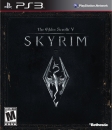JWeinCom said:
Teeqoz said:
It's not just a flaw with base 10 though. Base 3 also has fractions that can only be represented by infinitely recurring decimals. The only thing that changes when you change the base is what fractions.
If there is a system that has a flaw, then it's the decimal system itself. However I like to think of it as just another way of writing the same thing. 2/2 (As a fraction), 10^0, 1, 0.999.... All just different ways to write the value (not the number) 1. The recurring 9 notation works for all finite sequences of numbers as well (ie 0.25=0.24999....)
It's like a synonym in language. It's just that people are a bit more stuck up when it comes to math.
It may be a flaw in the system, but the flaw isn't that this should be incorrect, because it is correct. The flaw is that notation like this is ever used/ever has to be used. However when you denounce something as "simply the result of a flaw in the system", people are often quick to think "aha, so it's not actually correct", so you have to be careful when proclaiming things as the result of a flaw in the system.
|
I don't believe I said that the system is flawed. I said it is limited which I'll stand by. That's not to say other systems are not limited (I chose to use base 3 instead of base 2 because 1/3 and 2/3 still repeat there), but this particular example is one that exists in base 10 and not in other systems.
|
Still, when you say "it's only because of a limitation of the system", it has that same effect on people, ie. it makes them think "well, it is correct because of the limitations, but it's not really correct".
Also, to simply think of it as a limitation as to how our decimal system "displays" fractions isn't right, because the concept of 0.999... reccurring doesn't require you to think of it as 9 times 0.111.... reccurring, or 9*1/9. The fractions themselves are just used in (some) proofs. However you can prove that 0.999...=1 without using fractions, so they aren't the root of the problem.
The phenomenon that one value can be written in two ways (ie. that 0.25 = 0.24999... etc. for any possible value) exist for all bases, the only thing that changes is which digit is repeated (it's the highest digit of any given base, so in base 9, the digit repeated would be 8, in base 8, the digit repeated would be 7. In base 3, fractions like 1/2 are infinite sequences of numbers (1/2 in base 3 being 0.111....)


















































 but I've been meaning to get into abstract algebra specifically for group theory as I am interested in the applications along with the proofs ...
but I've been meaning to get into abstract algebra specifically for group theory as I am interested in the applications along with the proofs ... 






